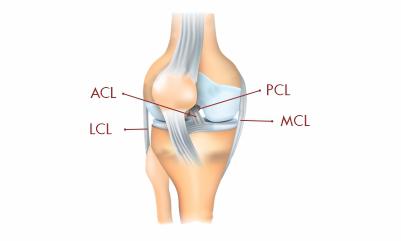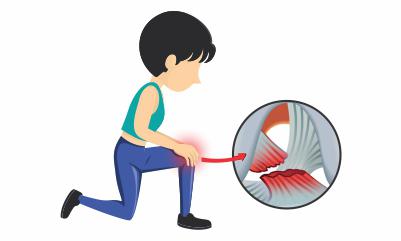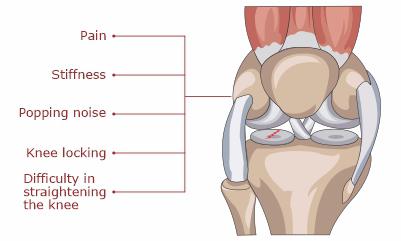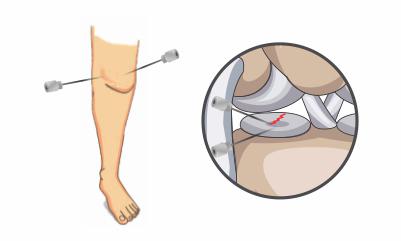The “ligament” is a structure that connects bone and makes the joint stable. The injury or overstretching of the ligament is known as sprain. Sprain to the knee causes its instability and also causes damage to other knee structures because of this instability.
Knee sprain is a painful condition and further, it can cause severe joint damage like osteoarthritis.

In a knee joint, there are 11 ligaments, but of these 11, only 4 are main, two stabilize the sideways movement and the other two stabilize the front and back movement.
- The ACL (Anterior cruciate ligament) and PCL (Posterior cruciate ligament), these two ligaments stabilize the front and back movement.
- The MCL (Medial collateral ligament) and LCL (Lateral collateral ligament) stabilize the joint and also prevent sideways knee movement.

- Grade 1 – Minor damage, there is tenderness at the affected area and in this grade, there is no instability.
- Grade 2 – A mild or partial rupture of the ligament along with tenderness, swelling. There can be no or mild instability.
- Grade 3 – This is a severe ligament tear or through and through ligament rupture with swelling and joint instability.
- Activities that causes knee to move from its native position, can cause knee sprain or ligament injury
- ACL: While running, playing sports like football or basketball, sudden twisting and jumping movement can cause ACL tears if the knee is over straightened.
- PCL: Due to any direct injury or trauma or in any car accident.
- LCL: Injury or trauma or if ligament is overstretched.
- MCL: Outward leg twist, or directly below.


Symptoms depend on which ligament is injured,
- ACL: When an injury occurs, you can hear a pop and feel unstable.
- PCL: You can feel pain at the backside of the knee and pain become worse when you are on your knees.
- LCL and MCL: Tenderness present on the internal or external side of knee, the joint may be unstable or there is knee-buckling.
Symptoms that are common with each ligament injury:
- Pain
- Swelling
- Buckling
- Tenderness
- Stiffness
- Popping sound
- Physical examination: There are separate tests for each ligament. In these tests, the ligament is stressed to check the instability.
- Tell your doctor about how you get injured, is there any pop sound. The doctor will also check swelling or bulges.
- X-Ray: To check any bony injury and joint alignment.
- MRI: This is more specific to check the ligament injury.
- Treatment always depends on, which ligament is injured and the severity of the
injury.
- Conservative management:
- Painkillers are prescribed to control pain.
- Rest the affected knee, don’t put load on the injured knee. Elevate the leg to reduce swelling. Do icing on the injured knee (at least 15 – 20 minutes and 4-5 times in a day).
- Use compression bandages to support the joint.
- Don’t move your affected knee, you can also use a knee brace to make the joint more stable.
- Physiotherapy: At the recovery stage, exercises recommended in the recovery phase. Ankle toe movements, leg lifts, strengthening of thigh muscles, stretching of the calf and thigh muscles, knee bend and straight, etc.

- Conservative management:
- Surgery
- If the conservative methods are not working or the ligament severely ruptured or torn (grade 3), it may require surgery. Arthroscopy is a simple and less invasive procedure and is used in treating severe ligament injury.
Symptoms that are common with each ligament injury:
- Pain
- Swelling
- Buckling
- Tenderness
- Stiffness
- Popping sound